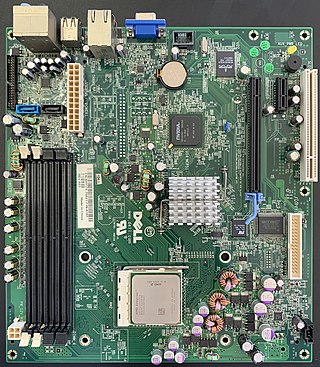
Brian Wilson Kernighan is a Canadian computer scientist.

Computing is any goal-oriented activity requiring, benefiting from, or creating computing machinery. It includes the study and experimentation of algorithmic processes, and development of both hardware and software. Computing has scientific, engineering, mathematical, technological and social aspects. Major computing disciplines include computer engineering, computer science, cybersecurity, data science, information systems, information technology and software engineering.

Computer science is the study of computation, information, and automation. Computer science spans theoretical disciplines to applied disciplines. Though more often considered an academic discipline, computer science is closely related to computer programming.

In computer science, a data structure is a data organization, management, and storage format that is usually chosen for efficient access to data. More precisely, a data structure is a collection of data values, the relationships among them, and the functions or operations that can be applied to the data, i.e., it is an algebraic structure about data.

Computer engineering is a branch of computer science and electronic engineering that integrates several fields of computer science and electronic engineering required to develop computer hardware and software. Computer engineering is referred to as computer science and engineering at some universities.
Originally, the word computing was synonymous with counting and calculating, and the science and technology of mathematical calculations. Today, "computing" means using computers and other computing machines. It includes their operation and usage, the electrical processes carried out within the computing hardware itself, and the theoretical concepts governing them.

Theoretical computer science (TCS) is a subset of general computer science and mathematics that focuses on mathematical aspects of computer science such as the theory of computation, formal language theory, the lambda calculus and type theory.
The following outline is provided as an overview of and topical guide to software engineering:

The USC Viterbi School of Engineering is the engineering school of the University of Southern California. It was renamed following a $52 million donation by Andrew J. Viterbi, co-founder of Qualcomm.

Professor Sartaj Kumar Sahni is a computer scientist based in the United States, and is one of the pioneers in the field of data structures. He is a distinguished professor in the Department of Computer and Information Science and Engineering at the University of Florida.
The Department of Computer Science is a department of the Faculty of Mathematics, Physics and Informatics at the Comenius University in Bratislava, the capital of Slovakia. It is headed by Prof. RNDr. Branislav Rovan, Phd.
Uniform machine scheduling is an optimization problem in computer science and operations research. It is a variant of optimal job scheduling. We are given n jobs J1, J2, ..., Jn of varying processing times, which need to be scheduled on m different machines. The goal is to minimize the makespan - the total time required to execute the schedule. The time that machine i needs in order to process job j is denoted by pi,j. In the general case, the times pi,j are unrelated, and any matrix of positive processing times is possible. In the specific variant called uniform machine scheduling, some machines are uniformly faster than others. This means that, for each machine i, there is a speed factor si, and the run-time of job j on machine i is pi,j = pj / si.

Patrick M. Hanrahan is an American computer graphics researcher, the Canon USA Professor of Computer Science and Electrical Engineering in the Computer Graphics Laboratory at Stanford University. His research focuses on rendering algorithms, graphics processing units, as well as scientific illustration and visualization. He has received numerous awards, including the 2019 Turing Award.

Mark A. Horowitz is an American electrical engineer, computer scientist, inventor, and entrepreneur who is the Yahoo! Founders Professor in the School of Engineering and the Fortinet Founders Chair of the Department of Electrical Engineering at Stanford University. He holds a joint appointment in the Electrical Engineering and Computer Science departments and previously served as the Chair of the Electrical Engineering department from 2008 to 2012. He is a co-founder of Rambus Inc., now a technology licensing company. Horowitz has authored over 700 published conference and research papers and is among the most highly-cited computer architects of all time. He is a prolific inventor and holds 374 patents as of 2023.
Engineering College, Ajmer is an autonomous institute of the Government of Rajasthan located at Badaliya Chouraha, beside N.H 8, Ajmer, Rajasthan, India. It was established in 1997. The college campus is spread over 300 acres of land.

Dimitri Panteli Bertsekas is an applied mathematician, electrical engineer, and computer scientist, a McAfee Professor at the Department of Electrical Engineering and Computer Science in School of Engineering at the Massachusetts Institute of Technology (MIT), Cambridge, Massachusetts, and also a Fulton Professor of Computational Decision Making at Arizona State University, Tempe.

Teofilo Francisco Gonzalez Arce is a Mexican-American computer scientist who is professor emeritus of computer science at the University of California, Santa Barbara.

Oscar H. Ibarra is a Filipino-American theoretical computer scientist, prominent for work in automata theory, formal languages, design and analysis of algorithms and computational complexity theory. He was a Professor of the Department of Computer Science at the University of California-Santa Barbara until his retirement in 2011. Previously, he was on the faculties of UC Berkeley (1967-1969) and the University of Minnesota (1969-1990). He is currently a Distinguished Professor Emeritus at UCSB.













